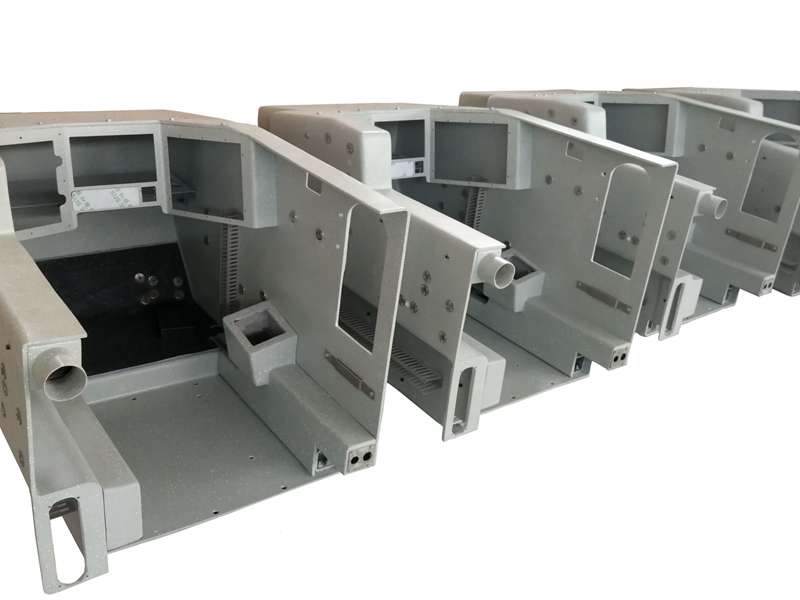Car and Boat Body Experts: Lightweight, Corrosion-Resistant
Fiberglass Bodies for Mobility: What’s New, What Works
If you build low-volume vehicles or special-purpose boats, you’ve probably wrestled with the eternal triangle: strength, weight, and cost. That’s exactly where Car And Boat Body composite shells come into play—especially the hand lay-up fiberglass builds I’ve been seeing out of northern China lately.

Quick context and industry pulse
Lightweight composite bodywork has quietly become the default for specialty EV conversions, patrol RIBs, resort shuttles, and custom restorations. To be honest, the trend isn’t flashy—just persistent: OEMs and upfitters want tight tolerances without paying for expensive molds or autoclaves. Hand lay-up, done right, still delivers. Many customers say they’re surprised how clean the gelcoat is straight out of the mold.
Technical build and process flow
• Materials: ISO/NPG marine gelcoat, E-glass fabrics (woven + CSM), vinyl ester or ortho/iso polyester resins; optional core (PVC foam or honeycomb).
• Method: controlled hand lay-up with staged cure; local vacuum assist where needed; metal inserts and mounting bosses laminated in.
• Tolerances: dimensional control within small bands (I’ve seen ±1.5–3.0 mm on panels, depending on span).
• QC: gelcoat thickness gauges, Barcol hardness, post-cure check; records tied to batch ID.
• Testing: tensile/flexural per ASTM D638/D790, impact per ASTM D256; small craft panels referenced to ISO 12215 where applicable.
| Spec (typ.) | Value (≈, real-world may vary) |
|---|---|
| Resin system | Vinyl ester or ISO polyester |
| Glass content | ≈ 35–45% by weight |
| Panel weight | ≈ 7–11 kg/m² (non-cored), lighter with foam core |
| Tensile strength (ASTM D638) | ≈ 120–180 MPa |
| Flexural strength (ASTM D790) | ≈ 200–300 MPa |
| UV/weathering | ISO 4892 pass (≥ 500 h QUV), gelcoat retention good |
| Service temp | -20 to +80°C continuous |
| Service life | ≈ 15–25 years with normal care |
| Finish | Mold-gloss gelcoat; paint-ready sanded available |

Applications and what users actually do
• Low-volume car shells, fenders, roofs, and fairings for EV kits and utility carts.
• Boat hulls/decks for RIBs, tenders, patrol and rescue craft.
• Municipal shuttles, campus buggies, theme-park replicas—surprisingly broad.
Customer feedback: “Panels landed within 2.2 mm of our CAD in critical areas,” one EU upfitter told me. Another noted less rework on paint because gelcoat orange peel was minimal—nice when deadlines bite.
Standards, test data, and certifications
Typical compliance touched: ISO 12215 (small craft construction guidance), ASTM D638/D790/D256 for coupons; salt-spray to ISO 9227 (≈ 240–480 h where hardware is installed). Plants I visited carried ISO 9001. Real-world, I guess, is what matters: fewer stress cracks at fasteners after 20k km road use on one fleet, and good gloss retention at 12 months coastal exposure.

Customization and options
Model: customized per requirements. Options include embedded inserts, bonded windows, hatch cutouts, color-matched gelcoat, and core for stiffness without weight. MOQ is friendly for pilot runs. Origin: No. 1289, Yingbin South Street, Jizhou District, Hengshui, Hebei, China.
Vendor snapshot (what to compare)
| Vendor | Process | MOQ | Lead time | Certs | Notes |
|---|---|---|---|---|---|
| Jrain (FRP) | Hand lay-up, local vacuum assist | Low (≈ 5–10 sets) | ≈ 20–35 days | ISO 9001 | Tight tolerances; flexible colors |
| Vendor A | Vacuum infusion | Medium | ≈ 30–45 days | ISO 9001, ISO 14001 | Great fiber ratio; higher tooling |
| Vendor B | Compression molding (SMC) | High | ≈ 25–40 days | IATF 16949 | Automotive-grade repeatability |
Case notes (field use)
• Coastal patrol boat refit: vinyl ester + foam core deck reduced mass by ~18%, improved fuel economy by around 6% in choppy conditions.
• Utility EV roof/door set: Car And Boat Body panels cut assembly time by ≈ 12% thanks to pre-laminated inserts—small thing, big impact at scale.
Bottom line: if you need appearance-grade composite panels with sane MOQs and dependable tolerances, Car And Boat Body shells hit that sweet spot. Not perfect—no process is—but they’re practical and surprisingly consistent.
Authoritative references
- ISO 12215-5: Small craft—Hull construction and scantlings. https://www.iso.org/standard/62698.html
- ASTM D638: Standard Test Method for Tensile Properties of Plastics. https://www.astm.org/d0638
- ASTM D790: Standard Test Methods for Flexural Properties of Unreinforced and Reinforced Plastics. https://www.astm.org/d0790
- ISO 9001: Quality management systems—Requirements. https://www.iso.org/iso-9001-quality-management.html
Latest news
-
Rectangular Tank Made of Fiberglass Material – Durable, Cost-Effective Liquid Storage SolutionsNewsNov.24,2025
-
Hollow Drill Rods for Efficient Drilling Operations in the Field | Durable, Lightweight & CustomNewsNov.23,2025
-
Powerful yt27 Rock Drill for Tough Mining Surfaces | Durable & PortableNewsNov.23,2025
-
Why the Reversible Drill Bit Is a Versatile Tool for All Your Drilling NeedsNewsNov.22,2025
-
Fiberglass Food Grade Equipment: Key Features, Benefits & Global ImpactNewsNov.22,2025
-
How a Drilling Rod Spirals Down Into the Earth: Tech, Trends & Global ImpactNewsNov.21,2025










